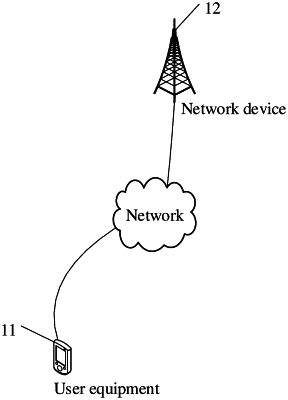| CPC H04W 72/1268 (2013.01) [H04W 72/23 (2023.01)] | 9 Claims |

|
1. A method of allocating an uplink data packet resource, applied to a user equipment, comprising:
performing Logical Channel Prioritization (LCP) based on Logical Channel Prioritization (LCP) restriction,
wherein performing LCP based on LCP restriction comprises:
receiving at least one uplink grant (UL grant) sent by a network device;
determining, according to Logical Channel Prioritization (LCP) restriction corresponding to a target object, correspondence relationship between the target object and the at least one UL grant;
performing resource allocation on each of the at least one UL grant according to the correspondence relationship between the target object and the at least one UL grant;
wherein, the LCP restriction comprises at least a mapping relationship between the target object and a selected one of a plurality of types of UL grants selected from among dynamic scheduling, grant-free scheduling and semi-persistent scheduling, and the target object is a service type or a logical channel or a logical channel group;
the service type is one of a Voice over Internet Protocol (VOIP) service, an Ultra-Reliable and Low Latency Communications (URLLC) service, and an enhanced Mobile Broadband (eMBB) service;
when the mapping relationship is mapping relationship between the service type and a type of UL grant, the mapping relationship comprises: mapping between the VOIP service and dynamically scheduled UL grant and/or semi-persistently scheduled UL grant; mapping between the URLLC service and dynamically scheduled UL grant and/or grant-free scheduled UL grant; mapping between the eMBB service and dynamically scheduled UL grant;
when the mapping relationship is mapping relationship between the logical channel and a type of UL grant, the mapping relationship comprises: mapping between a logical channel number and an UL grant, wherein a logical channel corresponding to the VOIP service is mapped to dynamically scheduled UL grant and/or semi-persistently scheduled UL grant; a logical channel corresponding to the URLLC service is mapped to dynamically scheduled UL grant and/or grant-free scheduled UL grant; a logical channel corresponding to the eMBB service is mapped to dynamically scheduled UL grant;
when the mapping relationship is mapping relationship between the logical channel group and a type of UL grant, the mapping relationship comprises: a mapping between a logical channel group number and an UL grant, wherein the logical channel corresponding to the VOIP service is mapped to dynamically scheduled UL grant and/or semi-persistently scheduled UL grant; the logical channel corresponding to the URLLC service is mapped to dynamically scheduled UL grant and/or grant-free scheduled UL grant; the logical channel corresponding to the eMBB service is mapped to dynamically scheduled UL grant.
|